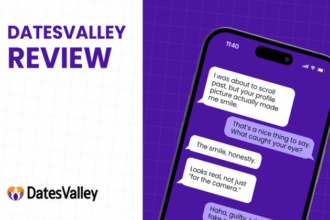Picture this: a customer walks into a store needing a pair of running shoes. Two stores offer the same brand, same model, same price. Yet one gets the sale—why? The answer hides not in inventory but in experience.
Retail customer service is the invisible thread tying every moment of a customer’s journey together—from that first step into a store (or click onto a website) to the final thank-you or follow-up email. The customer experience in retail isn’t one thing; it’s everything. The layout of the store. The tone of a greeting. The speed of a return. The clarity of signage. The confidence in the staff’s answers. The ease of checkout. All of it. Every tiny interaction either lifts the customer up—or quietly pushes them away.
Examples of Good Customer Service in Retail: Stories That Stick
- The Empowered Sales Associate
Walk into a Nordstrom. Ask for something obscure—maybe a size that’s not even on the rack. The associate smiles and walks to the back. A few minutes later, not only do they return with your size, but they offer styling suggestions, check other locations for color options, and genuinely seem excited to help. That’s not luck. That’s trained, empowered, human-centric retail customer service.
- The Unexpected Perk
Sephora’s in-store experience includes free samples, makeovers, and loyalty rewards that feel personalized. Customers don’t just shop—they explore. Test. Play. And leave feeling like they got something extra. No one needs to give away samples, but that little bit of generosity creates a lasting impression.
- The Seamless Return Policy
Zappos built an empire on free returns and 365-day return policies. Sounds risky? It worked. Why? Because shoppers felt safe taking a chance. That safety is customer experience. No fear = more sales.
Why It Matters: The Numbers Tell the Story
According to a 2023 PwC report, 73% of customers say experience is a deciding factor in their purchasing decisions, behind only price and product quality. But here’s where it gets sharper: 32% of customers say they will walk away from a brand they love after a single bad experience.
Let that sink in.
Loyalty is fragile. Great service doesn’t just attract customers—it keeps them. And retention? It’s worth gold. Research shows that improving customer retention by just 5% can increase profits by up to 95%.
Multi-Channel Harmony: Retail Is Not Just In-Store Anymore
It’s not 1995. Customers jump between devices, platforms, and physical spaces. Today’s retail experience spans websites, mobile apps, social media, and face-to-face interactions.
A customer might browse products on Instagram, research reviews on their tablet, check stock availability via app, and finally walk into a brick-and-mortar store. Disjointed transitions? That’s friction. But seamless ones? That’s magic.
This is where tech meets touch.
The Role of Feedback: Hear, Record, Improve
Ever hear a call between a frustrated customer and a calm support agent? It’s theater—often painful, occasionally inspiring, always informative. Recorded customer service calls are goldmines. And all you need is Call Recorder for iPhone, instead of expensive equipment. Call Recorder for iPhone helps reveal patterns, emotions, bottlenecks.
By analyzing recorded customer calls, retail teams can refine sales scripts, rework tone guidelines, and improve handling of common complaints. With tools for recording conversations businesses can capture these interactions, then audit them for tone, timing, and success. It’s not just about what’s said—it’s how, when, and why.
Data doesn’t just sit there. It builds better conversations tomorrow.
The Human Factor: More Important Than Ever
Yes, technology matters. But people matter more.
A chatbot can answer questions. But a human can hear hesitation. Understand context. Offer empathy. Create connections.
In fact, a study by Salesforce revealed that 76% of consumers expect consistent interactions across departments, but 54% say it generally feels like sales, service, and marketing don’t share information.
That disconnection is a silent killer.
What customers crave isn’t automation—they crave recognition. The feeling that they’re known, understood, valued. Retailers who train staff to listen, not just answer, outperform the ones who rush to script responses.
Personalization Without Creepiness: A Fine Line
There’s magic in remembering a returning customer’s favorite product or sending a birthday coupon. But there’s a danger in being too precise. Nobody wants to feel stalked.
Great customer experience dances that line. It knows just enough. It remembers purchase history. It sends relevant, timely offers. But it never oversteps.
Amazon? Masters of this. They predict needs. Suggest upgrades. Offer bundles. But always with an “opt-out” option. Power + respect = loyalty.
Making It All Work: Practical Takeaways
So what can a retail business do, starting now?
- Train deeply. Not just product knowledge, but tone, empathy, and problem-solving.
- Map the customer journey. Every touchpoint, digital and physical.
- Use data smartly. Leverage recordings and analytics to identify what’s working—and what’s not.
- Follow up. After a purchase, after a return, after a complaint. Let the customer know their voice matters.
- Empower your team. Give frontline staff the tools and permission to resolve problems without rigid scripts.
Conclusion: Experience Isn’t Optional—It’s Everything
Retail isn’t just about selling anymore. It’s about serving. About building trust in every gesture. About making customers feel seen, safe, and satisfied.
And here’s the twist: Great experiences often cost less than poor ones. A well-trained staff reduces complaints. A seamless return process saves time. A friendly tone calms tension. A well-analyzed sales call prevents future churn.
Retail customer service isn’t a department. It’s the heartbeat. And when it beats strong, customers don’t just shop—they come back.
Again and again.










